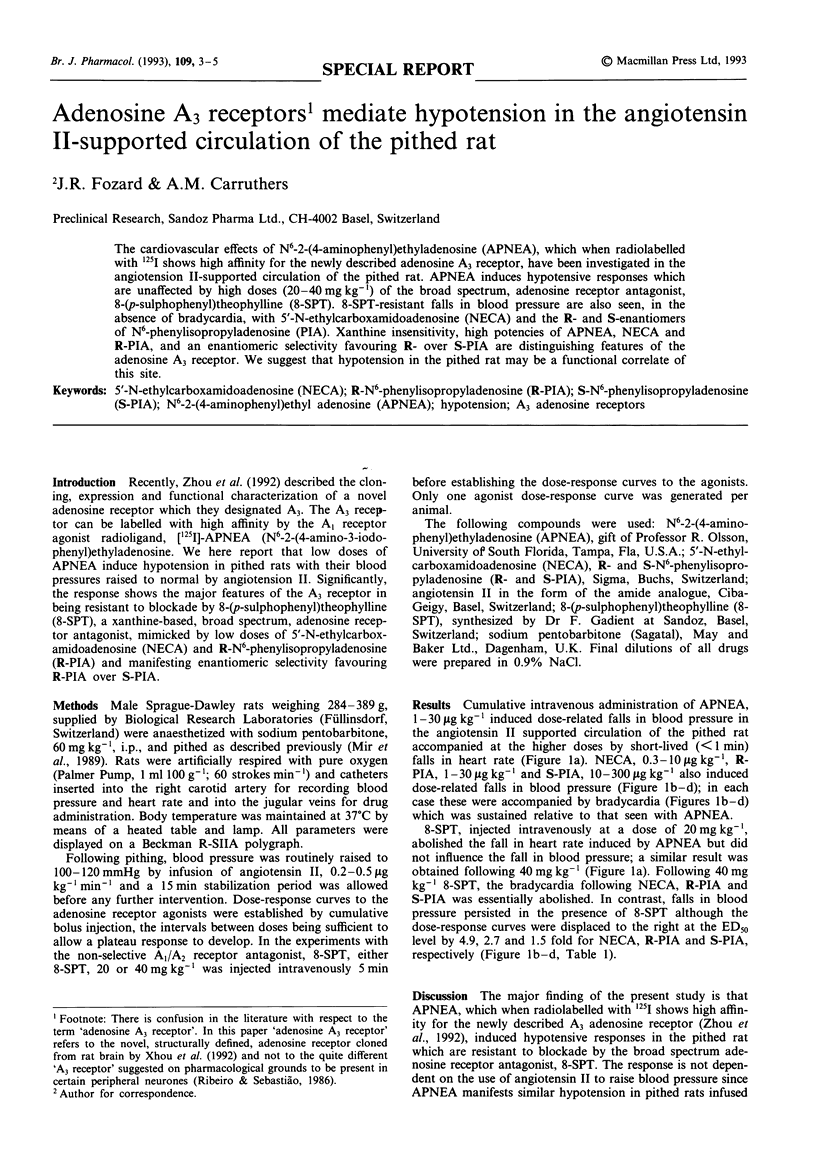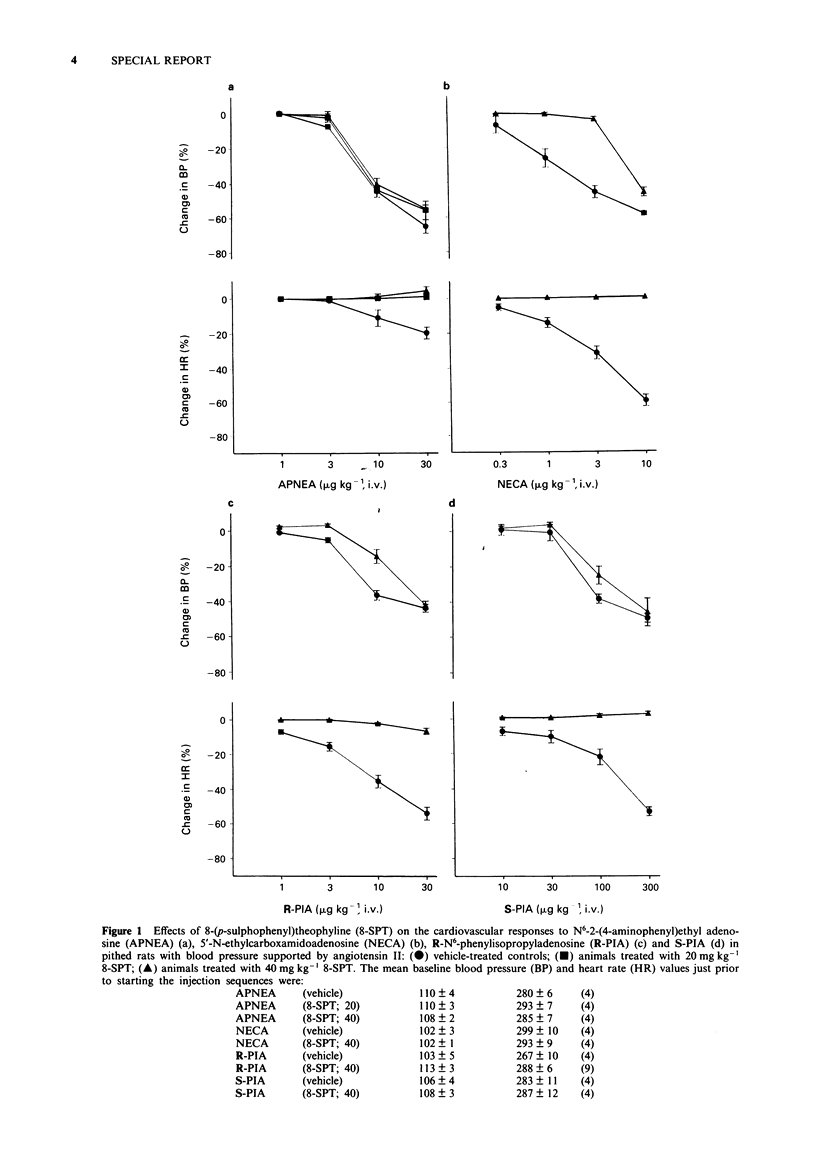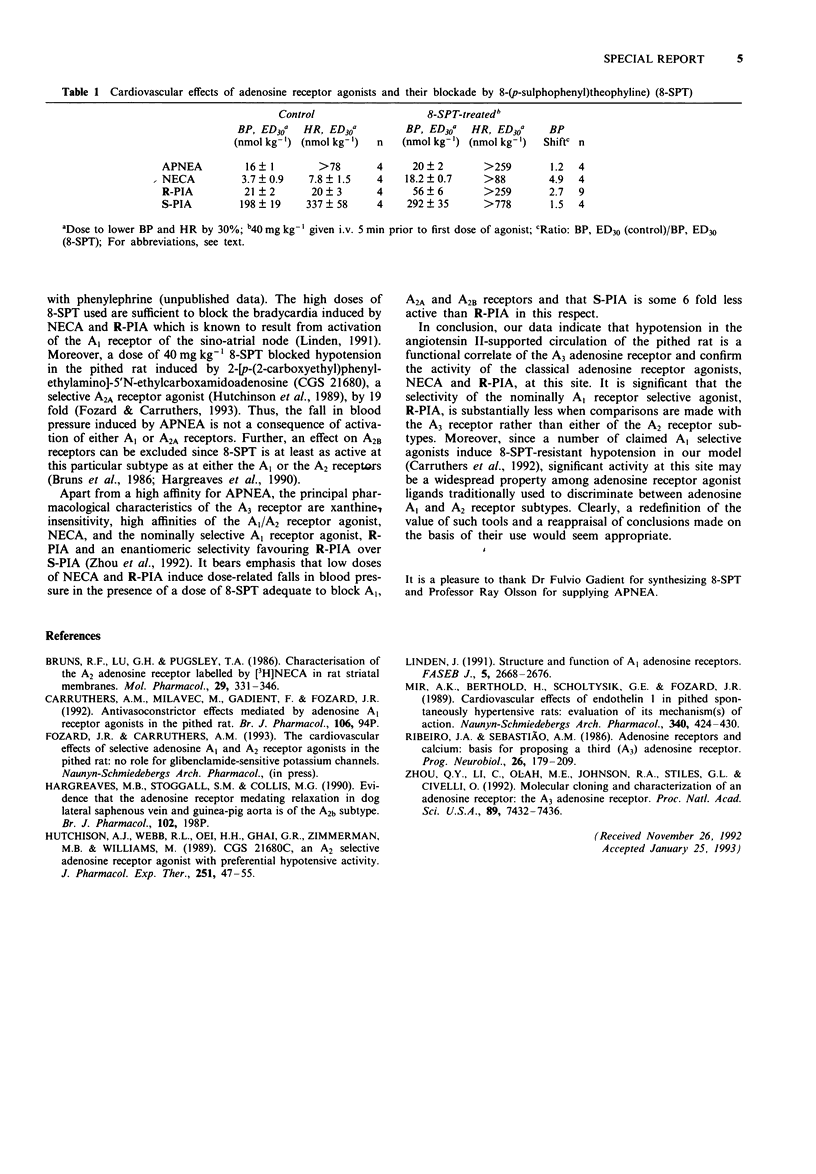Abstract
The cardiovascular effects of N6-2-(4-aminophenyl)ethyladenosine (APNEA), which when radiolabelled with 125I shows high affinity for the newly described adenosine A3 receptor, have been investigated in the angiotensin II-supported circulation of the pithed rat. APNEA induces hypotensive responses which are unaffected by high doses (20-40 mg kg-1) of the broad spectrum, adenosine receptor antagonist, 8-(p-sulphophenyl)theophylline (8-SPT). 8-SPT-resistant falls in blood pressure are also seen, in the absence of bradycardia, with 5'-N-ethylcarboxamidoadenosine (NECA) and the R- and S-enantiomers of N6-phenylisopropyladenosine (PIA). Xanthine insensitivity, high potencies of APNEA, NECA and R-PIA, and an enantiomeric selectivity favouring R- over S-PIA are distinguishing features of the adenosine A3 receptor. We suggest that hypotension in the pithed rat may be a functional correlate of this site.
Full text
PDF


Selected References
These references are in PubMed. This may not be the complete list of references from this article.
- Bruns R. F., Lu G. H., Pugsley T. A. Characterization of the A2 adenosine receptor labeled by [3H]NECA in rat striatal membranes. Mol Pharmacol. 1986 Apr;29(4):331–346. [PubMed] [Google Scholar]
- Hutchison A. J., Webb R. L., Oei H. H., Ghai G. R., Zimmerman M. B., Williams M. CGS 21680C, an A2 selective adenosine receptor agonist with preferential hypotensive activity. J Pharmacol Exp Ther. 1989 Oct;251(1):47–55. [PubMed] [Google Scholar]
- Linden J. Structure and function of A1 adenosine receptors. FASEB J. 1991 Sep;5(12):2668–2676. doi: 10.1096/fasebj.5.12.1916091. [DOI] [PubMed] [Google Scholar]
- Mir A. K., Berthold H., Scholtysik G. E., Fozard J. R. Cardiovascular effects of endothelin 1 in pithed spontaneously hypertensive rats: evaluation of its mechanism(s) of action. Naunyn Schmiedebergs Arch Pharmacol. 1989 Oct;340(4):424–430. doi: 10.1007/BF00167044. [DOI] [PubMed] [Google Scholar]
- Ribeiro J. A., Sebastião A. M. Adenosine receptors and calcium: basis for proposing a third (A3) adenosine receptor. Prog Neurobiol. 1986;26(3):179–209. doi: 10.1016/0301-0082(86)90015-8. [DOI] [PubMed] [Google Scholar]
- Zhou Q. Y., Li C., Olah M. E., Johnson R. A., Stiles G. L., Civelli O. Molecular cloning and characterization of an adenosine receptor: the A3 adenosine receptor. Proc Natl Acad Sci U S A. 1992 Aug 15;89(16):7432–7436. doi: 10.1073/pnas.89.16.7432. [DOI] [PMC free article] [PubMed] [Google Scholar]


